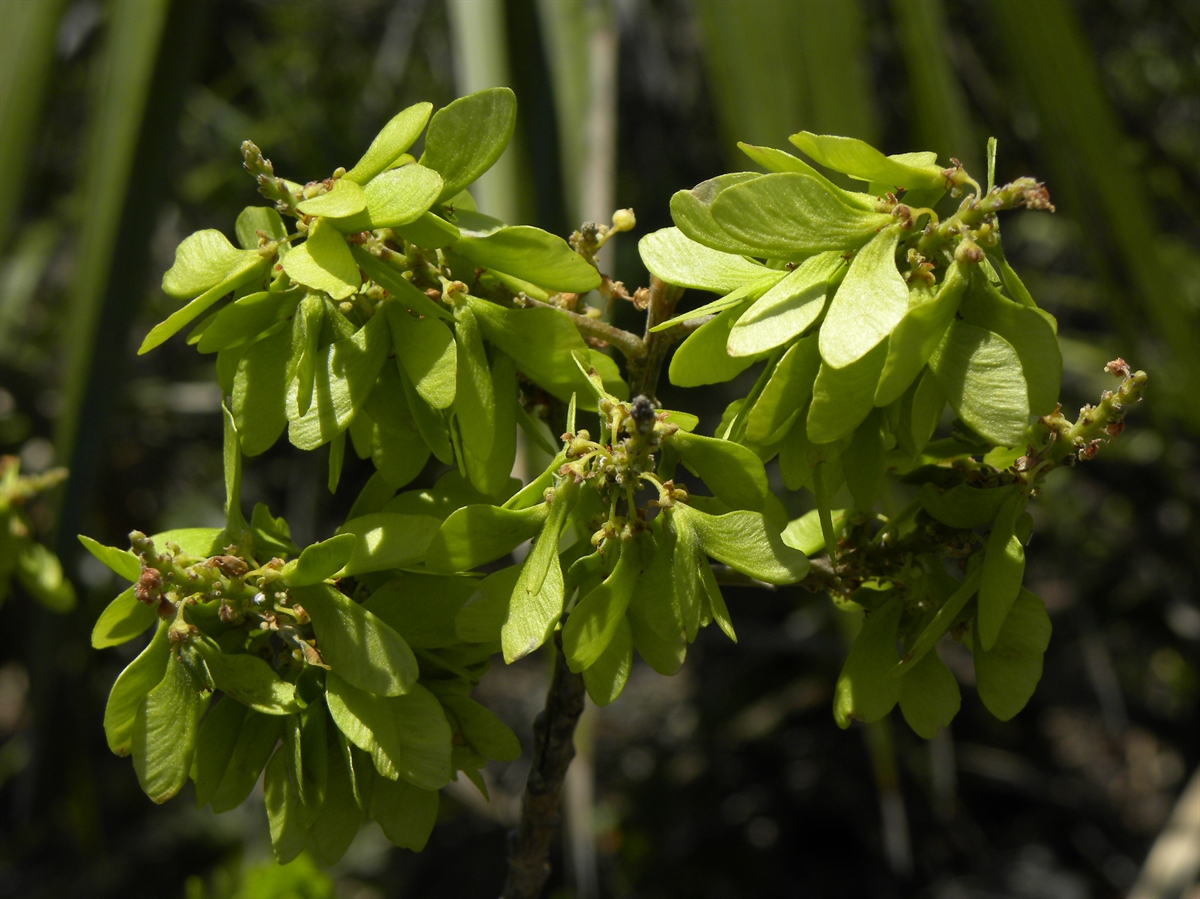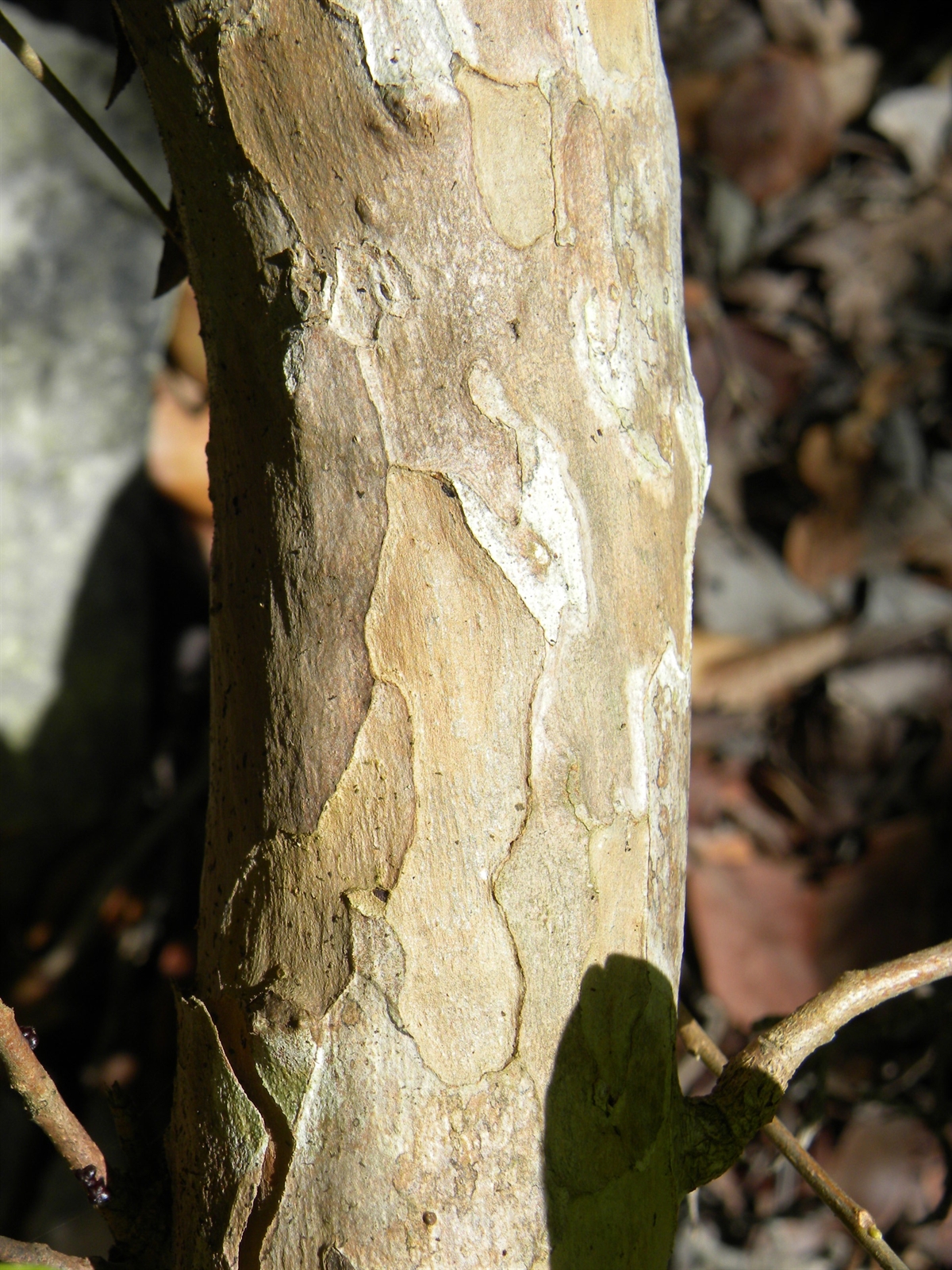Habit: Thouinia discolor grows as a large shrub to small tree up to 6 m in height with a stem to 20 cm in diameter. The bark is a mottled orange and grey. The trifoliate leaves are arranged alternately. The leaflets are to 8 cm in length, have an obtuse apex and entire margin. The abaxial surface is tomentose when young especially along the primary and secondary veins.
Thouinia discolor is monoecious. The incomplete, imperfect, zygomorphic flowers are arranged in racemes. The calyx has 4 (or 5) unfused greenish sepals. The corolla has 4 (or 5) unfused white petals. Staminate flowers have 8-10 stamens, no carpels but a nectiferous disk. The carpellate flowers have 8 staminodes. The ovary is superior and is 3-lobed with 3 locules each with a single ovule. The fruit is a samara at maturity.
Habitat: Thouinia discolor grows in Pine Woodlands and Dry Broadleaf Evergreen Formations – Forest/Woodlands/Shrublands (coppice and scrublands).
Distribution: Thouinia discolor is endemic to the Lucayan Archipelago and occurs on all island groupings.
Medicinal/Cultural/Economic usage: Thouinia discolor is used to treat dermatological problems (skin sores), in strengthening teas (energy), and obstetrics (treating newborns with inflammation, bed wetting), colds and flu (fevers), and pain.




